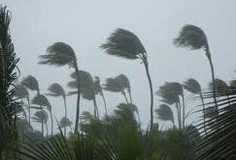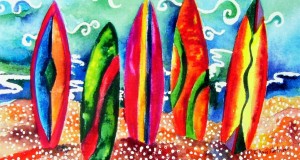
Nearly 700,000 Americans lose their gallbladder annually. According to medical papers, 20% of them may have digestive problems including abdominal pain, heartburn, belching, nausea, gas, bloating, constipation and bile diarrhea. The medical name for this disorder is postcholecystectomy syndrome. Gallbladder removal surgery is known as cholecystectomy.
Individuals without gallbladders typically suffer from mild or intense heartburn, constant and burning sensation in the throat and regurgitation of food or irritated liquids. In the worst-case situation, regurgitation occurs when the corroding stomach’s content fills the throat in the evening. This is diagnosed as gastroesophageal reflux disease (GERD).
These patients are prescribed stomach acid suppressed medications, but these medications do not help to everyone. Medical doctors began to recognize the type of reflux: acid reflux or bile reflux. 50-70% of the stubborn GERD cases may be caused by bile reflux.
Bile reflux is not anything new. Surgeons have observed bile in the stomachs of ulcer patients for over a hundred years. Nowadays, bile is reported during gastroscopy in patients with ulcers, chronic inflammation of the stomach (gastritis), gastroesophageal reflux disease (GERD) and Barrett’s Esophagus. Barrett’s Esophagus is a dangerous precancerous complication of the gastroesophageal reflux disease. Medical research shows that bile reflux can often be seen inside the stomach of patients without gallbladders.
What moves the bile into the stomach? If we understand that, it may explore the way of healing the bile reflux and its consequences.
To be more detailed, the bile reflux is the reflux of the mix of the pancreatic juice and bile. It is known that liver produces and releases bile and the pancreas produces pancreatic juice with digestive enzymes. It is critical to understand that, in the normal condition, the bile and pancreatic juice are remarkably alkaline solutions in the human body. Good digestion primarily depends upon alkalinity of these fluids. Contrary, acidic alterations in the bile and pancreatic juice initiate problems with digestion.
Bile is a balanced, alkaline, solution that consists of water, lecithin, cholesterol, bicarbonate, minerals, trace elements, bile pigments, bile acids and bile salts. Acidic changes of the bile destroy this gentle balance and lead to precipitation of the calcium, bile pigment and cholesterol; thus, gallbladder stones occur.
If bile becomes acidic, then increased bile acids are precipitated in the bile. Bile acids are very “aggressive” substances, which make acidic bile extremely corroded and irritable as a strong detergent. Acidic bile wears away and irritates the surrounding tissues such as ducts and sphincters. Consecutively, this causes harsh, uneven smooth muscle contractions; thus, bile travels incorrectly and creates bile reflux -“the wrong way traffic.”
If aggressive, acidic bile is collected and concentrated inside the gallbladder for an extended duration, irritation and inflammation can occur. On the other hand, without a gallbladder, the acidic, “aggressive” liver bile continuously irritates the sphincter of Oddi bile ducts and the duodenum (the first part of the small intestine). Aggressive, acidic bile causes jerky contractions of the duodenum’s walls. It may throw up bile into the stomach or even the esophagus causing bile reflux with constant burning sensation, heartburn, pain, nausea and vomiting.
Another explanation for bile reflux is sphincter of Oddi dysfunction. Spasms of this valve cause the rise of the pressure inside the common bile duct with pains and its enlargement. Spasms can also push the bile into the pancreas and cause pancreatitis.
This muscle valve-sphincter of Oddi can open at the incorrect time, such as when the duodenum is void of food. Acidic liver bile irritates the empty duodenum wall and pushes the “aggressive” bile up to the stomach. Doctors suppose that the sphincter of Oddi dysfunction is the culprit of several liver, gallbladder and pancreatic problems, and is a frequent reason for chronic pain post gallbladder removal.
It is known that liver bile serves as a vehicle to eliminate the toxic, fat-soluble substances from the human body. These fat-soluble substances contain bile pigments, drugs, cholesterol, alcohol, heavy metals and toxic chemicals. These toxic matters in high amounts may cause additional spasms of the sphincter of Oddi.
Hepatitis, congestion, inflammation, fatty liver, infection, and inflammation of the gallbladder, elevated body acidity levels, dehydration, poor eating habits and alcohol consumption can cause bile to become thick and acidic. It is difficult for this thickened and acidic bile to travel through the ducts and sphincter of Oddi.
Accordingly, the rationale for treatment has to focus on the root of the biochemical and biomechanical problems and changes in the bile and pancreatic juice. These problems begin from whole body acidity levels.
The body attempts to eliminate acidic materials throughout body fluids. One does not need sophisticated equipment to discover acidic levels. All that is needed is litmus paper that can be purchased in natural food stores. Checking saliva and urine pH levels by using litmus paper at home, in the morning and evening, may show acidic conditions, particularly, if saliva and urine pH are repeatedly less than 6.6.
Can we naturally bring acidic bile and pancreatic juices to normal, slightly alkaline levels?
I clarify in my articles before how the minerals and bicarbonate from foods and water and supplementation with magnesium and potassium can neutralize body acidity levels.
For these healing reasons, European doctors have used healing mineral water for many centuries. There are plenty of healing mineral spas all over the Europe. The most medically researched is the mineral water from thermal springs of the small Czech Republic town of Karlovy Vary. European doctors have recommended that their patients with liver and digestive disorders to drink Karlovy Vary mineral water since the 16th century.
At the Karlovy Vary resort, spring water has been vaporized to produce a mineral salt for more than 200 years. People unable to drink water from the thermal springs utilized healing mineral water prepared by dissolving Karlovy Vary genuine thermal spring salt in plain water at home. Czech doctors believe that dissolving this salt in water at home creates the mineral water with similar healing actions.
European doctors validated that drinking Karlovy Vary healing mineral water decreases bile and pancreatic juice “aggressive” and acidic levels. In addition, this healing mineral water increases bile and pancreatic juice liquidity to ease their move throughout the bile ducts and sphincter of Oddi.
Drinking Karlovy Vary healing mineral water promotes proper digestion, diminishes gas and bloating and lessens pains and cramps. It also reduces heartburn and burning sensations.Healing of the postcholecystectomy syndrome with this healing mineral water has been confirmed for hundreds of years.
Besides magnesium and potassium supplements and drinking healing mineral water produced from genuine Karlovy Vary thermal spring salt, other supplements for bile reflux include enzymes, probiotics, zinc-carnosine and DGL.
No doubt, food is a crucial, safe and cheap medicine for bile reflux. Food products need to be alkaline-forming and are packed with natural digestive enzymes. Various raw, fresh-made, vegetable blends or juices are excellent examples of alkaline foods.
Patients with the bile-pancreatic reflux may suffer from other disorders such as Candida-yeast overgrowth and small intestine bacterial overgrowth (SIBO). It can ensue after taking antibiotics, some medications, consumption of the sugars and drinking soda and alcohol. These overgrowths cause constant fermentation in the intestines and produce gas such as hydrogen or methane. These gases can open the muscle valve (lower esophageal sphincter – LES) between the stomach and esophagus and move the stomach content up with severe burning sensations and heartburn.
It is impossible to completely irradiate the Candida-yeast because it is a regular element of human intestinal flora. Problems start with Candida-yeast overgrowth. Diet, good quality probiotics, herbs, nutritional supplements, healing mineral water and colon hydrotherapy may help to keep Candida-yeast in balance.
The LES is usually resilient. For instance, when a healthy skilled yoga person stands on their head, the lower esophageal sphincter holds back the stomach contents and defends the esophagus from injury.
If the pressure within the stomach rises, the LES opens at inappropriate times. The muscle valve cannot hold up the increased pressure inside the stomach. Consequently, it unlocks. Bulky dinners or lying down after large meals or wearing tight-fitting clothing and belts can raise the pressure inside the stomach. Unhealthy food combinations such as proteins, starches, and sugars together can cause gas and heartburn, as well.
What else can reduce bile reflux?
Herbal medicine is the oldest way to reduce digestive problems. Some herbs enhance bile amounts and help its natural elimination and decrease heartburn, abdominal spasms and pain. Experienced health care practitioners can customize the herbal remedies for every digestive problem.
I personally use acupuncture and gentle abdominal massage and observe positive results in the heartburn after gallbladder removal.
When a patient suffers from suppressed stomach acidity and cannot find relief, there is a high risk of bile reflux. For now, bile reflux is difficult to treat. Therefore, non-drug, non-knife, natural approaches may be helpful. A licensed, experienced health practitioner should be researched and consulted.
Failure to control bile reflux may result in serious health problems such as ulcers, stomach and duodenum inflammation, and Barrett’s esophagus; a potential precursor to esophageal cancer, as well.
The info on this article is here only for educational and informational purposes only. It is not intended as a substitution for the diagnosis and treatment, or advice of a qualified licensed professional.

Source by Peter Melamed Ph.D.
 Vitamin Agent The Health & Naturalistic Source
Vitamin Agent The Health & Naturalistic Source





